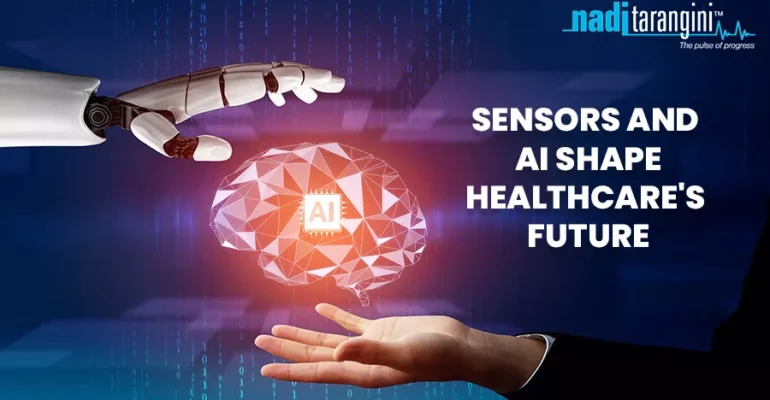From Data to Diagnosis: How Sensors and AI Shape Healthcare’s Future

From Data to Diagnosis: How Sensors and AI Shape Healthcare’s Future
Sensors detect and respond to physical inputs such as light, heat, motion, pressure, or other factors such as environmental phenomena. The output is typically a signal that is translated to a human-readable display at the sensor location or transferred electronically via a network for reading or additional processing.
The Pioneers of Remote Monitoring
Wearable sensors have progressed beyond novelty to critical responsibilities as health guards. These sensors, which range from wrist-worn trackers to sophisticated patches, continuously collect a wealth of physiological data, providing healthcare providers with new insights into patient well-being. Remote monitoring is no longer a distant dream; it is now a reality. Real-time vital sign monitoring gives people control over their health while providing professionals with a more detailed picture, allowing for timely interventions and preventive measures.
Unveiling the Diagnostic Potential

The prowess of sensors extends to the diagnostic realm, fostering a revolution in point-of-care testing. Rapid and accurate assessments through sensor-integrated devices offer a swift glimpse into health metrics, from glucose levels for diabetics to markers indicative of broader health profiles. Imaging technologies, underpinned by sensor innovations, unveil intricacies within the human body, expediting diagnoses with unprecedented clarity.
Artificial Intelligence with Big Data Infusion

The symbiotic relationship between sensor data and artificial intelligence opens up a world of possibilities. Deep learning algorithms uncover patterns in massive datasets, providing insights that allow clinicians to make more educated judgments. Predictive analytics estimate prospective health trajectories by utilizing data deluges, supplementing prevention measures and treatment solutions.
Changing Challenges and Prospects
As with any technology transformation, there will be hurdles along the way. The sanctity of patient data necessitates fortification against breaches, increasing the conversation about data security and privacy. Obtaining flawless interoperability among various sensors and systems emerges as a frontier waiting to be conquered. Nonetheless, these roadblocks act as catalysts, encouraging greater innovation and cross-disciplinary collaboration.
Nadi Tarangini -The Beginning of a New Healthcare Era

Healthcare’s linked trajectory with sensor technology unfolds as a narrative of promise and potential. Sensors that are smaller, more precise, and intimately knit into the healthcare fabric are on the horizon. Interconnected ecosystems will etch the narrative, leveraging the synergy of sensors, AI, and human expertise to revolutionize patient care.
The Beginning of the New Healthcare Era started with Nadi Tarangini, a patented digital Nadi Pariksha device. The integration of ancient wisdom with modern technology in the form of Nadi Tarangini. This fusion offers a unique approach to enhancing health harmony by combining traditional Ayurvedic pulse diagnosis with cutting-edge digital tools. Nadi Tarangini exemplifies how technology can complement and amplify the effectiveness of time-tested healthcare practices.
The convergence of sensor technology and healthcare at this epoch-defining juncture is more than just a convergence of circuits and algorithms; it is a tribute to our commitment to elevating healthcare to unprecedented heights. The imperatives remain clear as we cross this frontier: harness innovation, minimize difficulties, and ensure that the beacon of technology illuminates the route to a healthy tomorrow.

